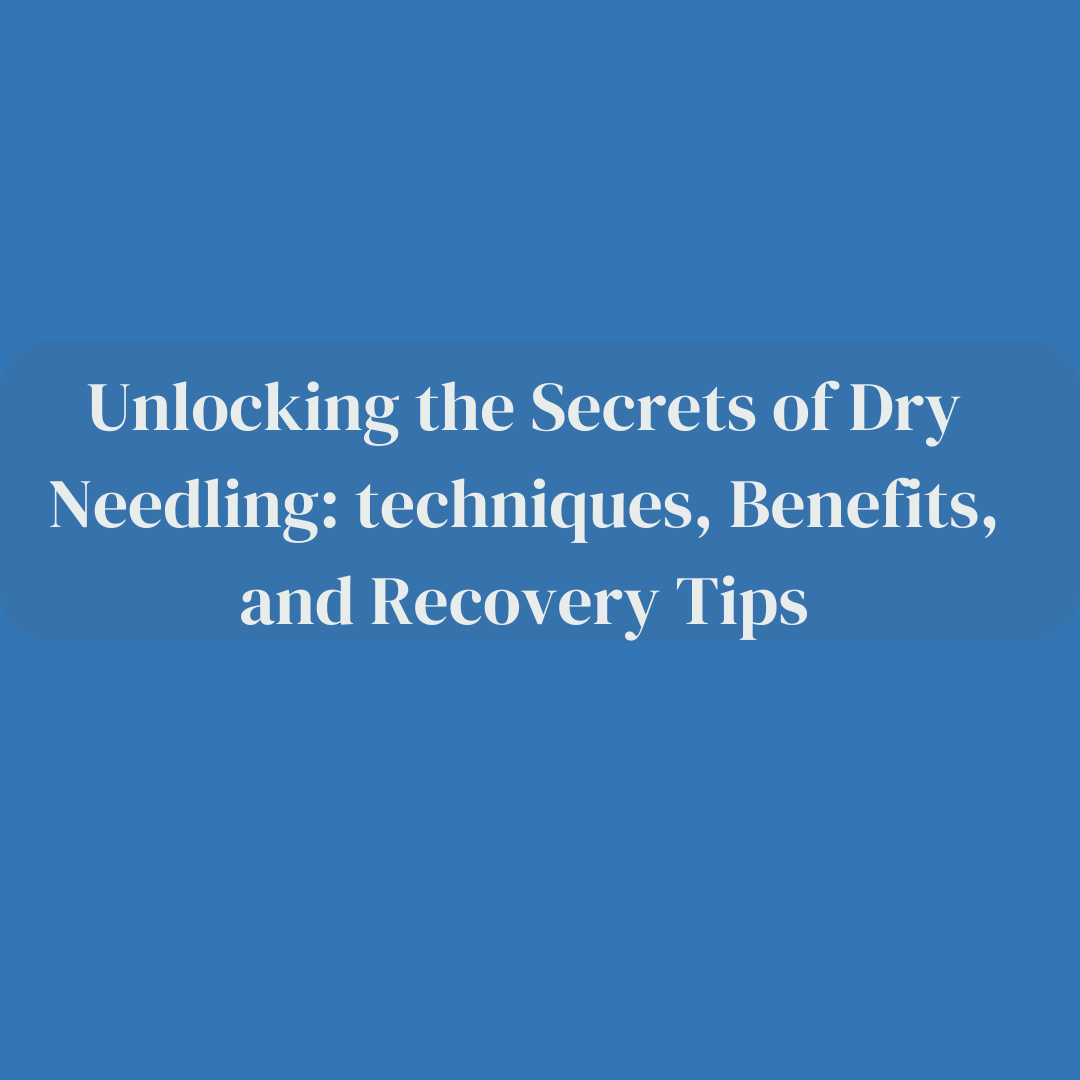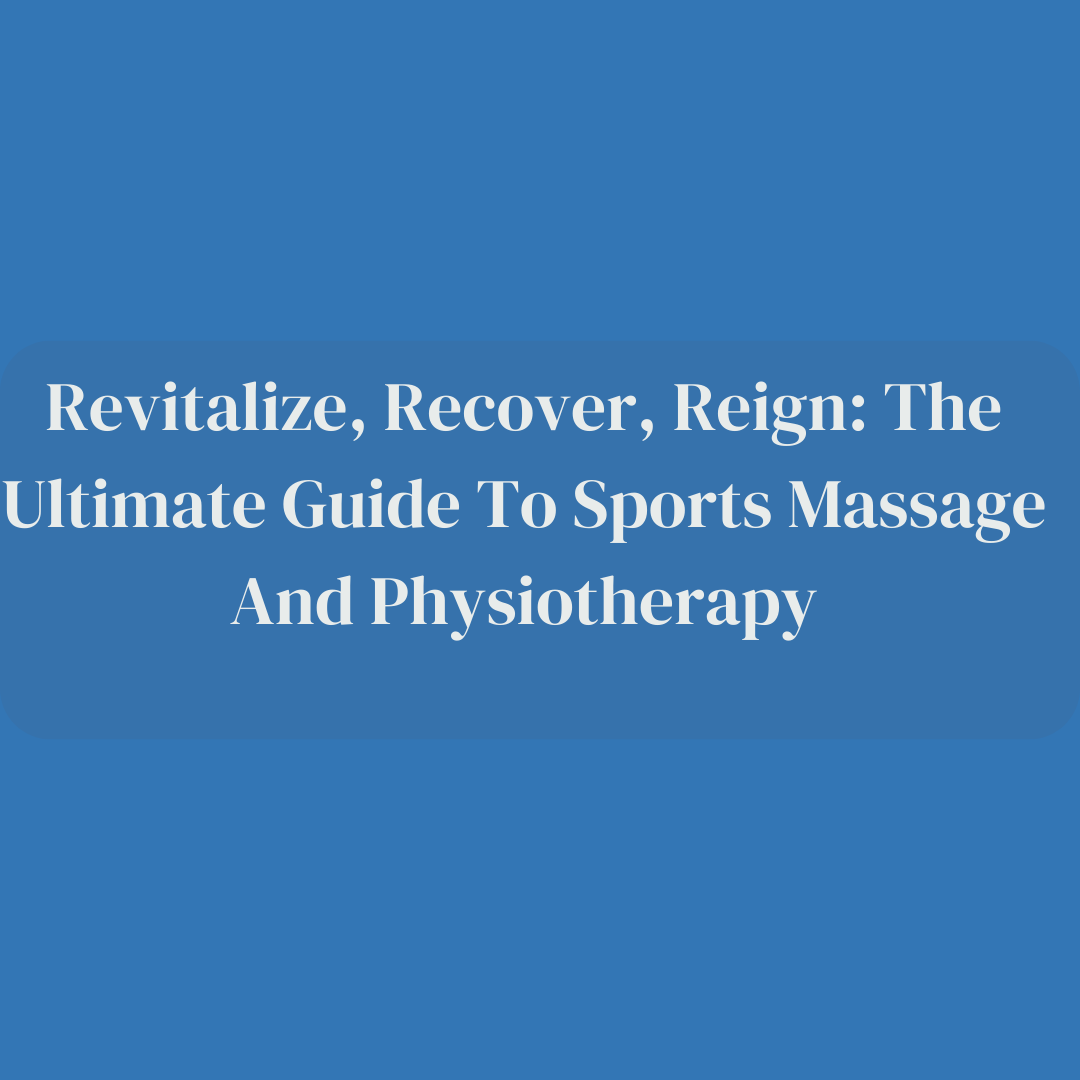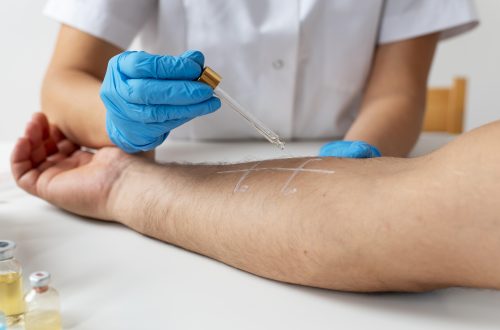Introduction
Dry needling is a unique and effective therapeutic technique gaining popularity in the world of physical therapy and pain management. While it may sound intimidating, it is a safe and minimally invasive approach to treating a wide range of musculoskeletal issues. In this blog, we will unlock the secrets of dry needling, exploring its techniques, benefits, and essential recovery tips to help you better understand this valuable therapeutic tool.
What Is Dry Needling?
Dry needling is a specialized treatment technique performed by trained healthcare professionals, such as physical therapists or chiropractors. It involves the insertion of thin, solid needles (similar to acupuncture needles) into specific trigger points or areas of muscular tension.
Techniques:
- Trigger Point Dry Needling: This technique targets trigger points in muscles, which are tight knots that can lead to pain, restricted movement, and discomfort.
- Superficial Dry Needling: Used for treating pain on or just beneath the skin’s surface, this technique stimulates sensory nerves, reducing pain signals.
- Deep Dry Needling: This technique focuses on deeper muscle layers and connective tissues, making it effective for chronic pain and tension relief.
Benefits of Dry Needling
Dry needling offers a myriad of benefits for individuals dealing with various musculoskeletal problems:
1. Pain Relief:
One of the primary and most sought-after benefits of dry needling is its exceptional ability to provide effective pain relief. This technique targets specific trigger points within muscles, where tension and knots tend to accumulate. By inserting thin, solid needles into these trigger points, a cascade of physiological responses is triggered. This includes the release of endorphins, the body’s natural painkillers, which helps to alleviate discomfort. Additionally, dry needling encourages improved blood flow to the affected areas, reducing inflammation and the perception of pain.
2. Improved Range of Motion:
For individuals struggling with restricted movement and limited range of motion, dry needling can be a game-changer. Through the precise insertion of needles, muscle fibers that have become tight or knotted can be encouraged to relax. This relaxation allows for increased flexibility and movement in the affected area. Whether it’s a stiff neck, a frozen shoulder, or tight lower back muscles, dry needling can facilitate a noticeable improvement in your ability to move freely.
3. Faster Healing:
Dry needling stimulates the body’s natural healing mechanisms. By targeting trigger points, this technique prompts a localized inflammatory response. This may sound counterintuitive, but it’s a crucial step in the healing process. The inflammation signals the body to send in repair cells and nutrients to the area. This influx of resources accelerates tissue repair and regeneration. Consequently, individuals who undergo dry needling often experience faster recovery times from injuries, strains, and other musculoskeletal issues.
4. Enhanced Flexibility:
Stiff, inflexible muscles can significantly impact your daily life. Dry needling is a powerful tool in promoting muscle function and reducing tension. By targeting specific areas of tightness, it encourages muscle fibers to lengthen and release their grip. This leads to improved flexibility and a greater range of motion. Whether you’re an athlete striving for peak performance or someone simply seeking to move without discomfort, the enhanced flexibility provided by dry needling can be transformative.
5. Reduction in Muscle Spasms:
Muscle spasms can be incredibly painful and disruptive to your daily activities. Dry needling is particularly effective in addressing this issue. By targeting trigger points associated with spasms, the needles encourage the muscles to relax. This relaxation can lead to a significant reduction in the frequency and intensity of muscle spasms. Whether you suffer from chronic back spasms or occasional leg cramps, dry needling offers a targeted and effective solution.
6. Effective for Chronic Conditions:
Dry needling has shown remarkable efficacy in addressing chronic pain conditions. Conditions like fibromyalgia, tension headaches, and myofascial pain syndrome can be challenging to manage. Dry needling offers a targeted approach to relieving the underlying muscular tension contributing to these chronic issues. By releasing trigger points and encouraging improved blood flow, individuals with chronic pain conditions often experience a notable reduction in their symptoms.
Recovery Tips After Dry Needling
Recovery after a dry needling session is a crucial aspect of ensuring you get the most out of this therapeutic technique. Proper post-treatment care can enhance the benefits and minimize any potential discomfort. Here are detailed recovery tips to keep in mind:
1. Hydration:
Staying well-hydrated is paramount after a dry needling session. Hydration supports the body’s natural healing processes and helps flush out any toxins that may have been released during the treatment. Aim to drink at least 8-10 glasses of water throughout the day. This will aid in the removal of waste products from the treated muscles and tissues, promoting a smoother recovery process.
2. Gentle Exercise:
Engaging in light, low-impact exercises can be immensely beneficial in the aftermath of a dry needling session. Activities like gentle stretching, walking, or yoga can help maintain blood flow, prevent stiffness, and promote overall muscle relaxation. However, it’s important to avoid strenuous activities or heavy lifting for at least 24-48 hours after the treatment. Listen to your body and adjust the intensity of your exercises accordingly.
3. Rest:
Rest is a critical component of the recovery process after dry needling. While light movement and exercise are encouraged, it’s equally important to give your body the downtime it needs to heal. Avoid overexertion and ensure you get a good night’s sleep. Allow your body the opportunity to repair and regenerate the treated tissues. Adequate rest will optimize the benefits of dry needling and contribute to a swifter recovery.
4. Heat and Ice:
Applying heat or ice packs to the treated areas can be immensely helpful in managing any soreness or inflammation. This can be particularly effective for individuals who experience mild discomfort post-treatment. Applying a warm compress or taking a warm bath can relax the muscles, while ice packs can help reduce any potential swelling. Be sure to follow your healthcare provider’s recommendations regarding the duration and frequency of heat or ice application.
5. Follow Recommendations:
Your healthcare provider will provide specific post-treatment recommendations based on your individual needs and the areas treated. It’s crucial to adhere to these instructions. This may include advice on activities to avoid, specific stretches or exercises to perform, and any additional at-home care techniques. Following these recommendations will contribute to a smoother recovery and optimize the benefits of your dry needling session.
6. Communicate:
Effective communication with your healthcare provider is key in ensuring a successful recovery after dry needling. If you experience any unexpected pain, discomfort, or unusual sensations following the treatment, don’t hesitate to reach out to your provider. They can offer guidance, reassurance, or make any necessary adjustments to your post-treatment care plan.
Conclusion
Dry needling is a powerful and versatile technique that can help individuals find relief from various musculoskeletal issues. Understanding its techniques, benefits, and post-treatment recovery tips is essential for those considering or undergoing this treatment. If you’re interested in trying dry needling, consult with a qualified healthcare professional to determine if it’s a suitable option for your specific condition. Unlocking the secrets of dry needling can lead to improved pain management and a better quality of life.
Ready to explore your options for chiropractic and physiotherapy? Contact
SwastyaPhysio today to schedule a consultation and discover the best path to your wellness journey. We’re here to support your health every step of the way.
Banaswadi |
HBR layout |
Kalyan Nagar |
Kammanahalli | Horamavu | Hennur
FAQs about Dry Needling
Is dry needling painful??
Dry needling may involve some level of discomfort during the treatment, but it’s important to note that the sensation varies from person to person. The needles used in dry needling are extremely thin, and the insertion is typically quick and precise. Many individuals report feeling a mild to moderate pricking or tingling sensation, which is usually temporary. Moreover, the potential discomfort is often outweighed by the significant pain relief and improved mobility experienced after the session.
How many sessions are needed?
The number of dry needling sessions required depends on several factors, including the nature and severity of the condition being treated, the individual’s response to the therapy, and their overall health. Some individuals may experience immediate relief after just one session, while others may benefit from a series of sessions spaced out over a period of time. Your healthcare provider will assess your progress and recommend a treatment plan tailored to your specific needs.
Is dry needling the same as acupuncture?
While both dry needling and acupuncture involve the use of thin needles, they are distinct techniques with different underlying principles and goals. Acupuncture is rooted in traditional Chinese medicine and is focused on balancing the body’s energy flow (Qi) along specific meridians. Dry needling, on the other hand, is firmly grounded in Western medicine and targets specific anatomical structures, such as trigger points and tight bands of muscle tissue. It aims to release muscular tension and alleviate pain.
Are there any side effects?
Side effects associated with dry needling are typically mild and transient. They may include:
- Temporary Soreness: Some individuals may experience mild soreness or aching at the needle insertion sites. This discomfort usually subsides within a day or two.
- Bruising: In rare cases, slight bruising may occur at the treatment sites. This is usually minimal and fades quickly.
- Minimal Bleeding: It’s possible to experience a small amount of bleeding at the needle insertion points, but this is rare and usually stops quickly.
It’s important to note that serious complications from dry needling are extremely rare when performed by a qualified and trained healthcare professional.
Can dry needling be combined with other therapies?
Yes, dry needling can often be integrated into a comprehensive treatment plan that may include other therapeutic modalities such as physical therapy, chiropractic care, or massage. Combining treatments can enhance overall outcomes, particularly for individuals with complex or chronic musculoskeletal issues. Your healthcare provider will determine the most appropriate approach based on your specific condition and needs.






